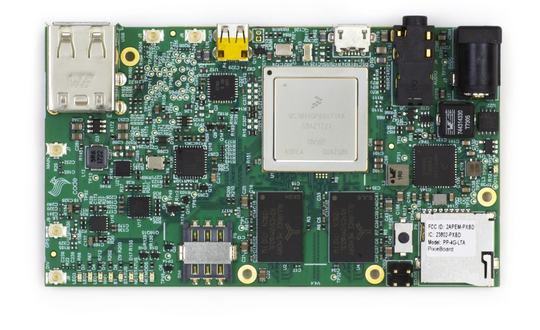
José María Ruiz de Velasco, CEO of Code and Modules Inc
Seeing an opportunity and taking it isn’t always as easy as it sounds. As an entrepreneur, seizing a chance to fill a gap in the market with a novel idea or product can be a difficult step to take. Is there a demand for it, are other companies already working on this, does this idea or product really have the potential for success? In order to take this leap of faith, it is crucial to move forward with the right blend of pragmatism and courage.
Given the rising demand within the IoT market, which is expected to reach $232.15B by 2023 with a CAGR of 8.06%, it is no surprise that there are plenty of opportunities here. Major tech players such as IBM, Siemens, and Bosch understand this and have all made moves to succeed in this market.
But for two entrepreneurs, José María Ruiz de Velasco, CEO of Code and Modules Inc, and Roberto Himmelbauer, Director of Consulting solutions at Code and Modules Inc, an opportunity within the IoT market came knocking and they grabbed it, which gave birth to their new product, PixieBoard. Their idea has since taken off and they have won support from major backers such as HACK Fund, a venture fund created by Hackers/Founders (H/F) that uses blockchain technology to provide accelerated liquidity to investors. To get a better understanding of their company, what they do, and what plans they have for the future we spoke with the pair to find out more.
Can you explain a little bit about your company and how it started?
We have a professional engineering services company in Mexico and during many years we saw a lot of potential clients come through our door with prototypes of IoT devices in their hands built around community boards like Raspberry Pi and Arduino. It was usually a tough situation because they could either a) spend more than 75k to get a custom design for them, get it certified and back to the point they are now in 12 months’ time, or b) choose a professional platform that would cost them 10+ times more and have fewer features. It usually meant the initiative failed for our clients, and that isn’t good for anyone.
So, with that experience, we decided to design PixieBoard, a hardware platform that could be used from the prototyping stage but that would also allow our users to deploy their solutions to production environments, especially when it comes to industrial or enterprise-grade connected solutions. Our goal is to shorten the time it takes for companies of all sizes to deploy a professional/industrial grade connected solution leveraging on our fully certified platform, with a lot of state-of-the-art technologies onboard, especially wireless and LTE 4G cellular, in a small form factor. Our users would rest assure their device will be always connected and their deployed solution will be highly reliable. We called this new company Code & Modules Inc. and opened the office here in Silicon Valley because we saw a lot of IoT/Edge initiatives going on here. We just launched our product officially last month.

Roberto Himmelbauer, Director of Consulting solutions at Code and Modules Inc
Can you give an example of a company or case study that has really benefited from Code and Modules?
There are many, but there’s a company in the transportation industry in Mexico that provides multiple assets and software solutions for public transportation systems in 5 countries, including Mexico, US and other countries in LATAM. They benefit from PixieBoard because it allows them to standardize their hardware design and provides full connectivity and excellent performance to all of their products. One of the most important aspects of deploying a solution with longer lifecycles is having the ability to keep updating, adding features and issuing security patches to your installed assets, and with PixieBoard all of that is not only possible but easy to do. This company controls systems that will provide multiple services, including ticketing, validation of contactless cards, passenger control and onboard equipment for up to 5 years and they rely on our platform to do so.

PixieBoard PRO+
Who do you consider to be your main competitors and how do you differentiate yourself from them?
We consider companies like Toradex and Advantech to be our main competitors, because they offer professional grade SoMs and SBCs, but we believe we offer a more complete feature set, especially considering we add LTE 4G cellular to all of our products and have more RAM memory than most in a small form factor with a competitive price point.
Some of our users compare PixieBoard to community boards like Raspberry Pi, however, we don’t consider those boards as direct competitors. We believe that community boards are great tools to help you learn and come into the world of IoT, but once you want to do it professionally and build a business around it, you’ll quickly find out that they are usually not enough.
What do you consider Code and Modules’ greatest achievement within the past 6 months?
I would say being able to actually launch our product. It took a lot of work to have a product certified and a supply chain ready to start assembling our devices.
What is the main focus for Code and Modules over the next 6 months?
Definitely, we will focus on building awareness around PixieBoard and help more companies adopt our hardware platform for their next generation of connected products. We are a B2B company and that means we surround our product with a lot of additional services, including technical support and engineering services to ensure our adopters take full advantage of the piece of hardware they are getting from us. We like working closely with our clients and helping them design their solutions from concept to deployment and operation.
Jose, I can see from your Linkedin you have a lot of experience working professionally in Mexico. What are the key differences between entrepreneurship and business in Mexico versus the US, more specifically Silicon Valley?
I would say the main difference is the number of companies that are moving towards connected solutions. In Mexico, there is a technological revolution happening, but here in SV things move very fast and everyone is putting IoT and AI in their products. It is amazing to have the opportunity to see it first hand and be part of it.












